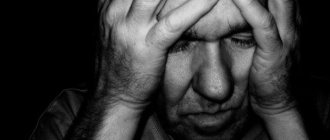The best cure for depression is antidepressants
Antidepressants are the main medications to combat various forms of depression.
They are psychotropic drugs, that is, those that have a strong effect on the functioning of the central nervous system. Antidepressants affect the level of neurotransmitters in the body, in particular the presence of norepinephrine, serotonin and dopamine. The effect of their action on the patient is that his mood improves, melancholy, fear, and anxiety decrease, appetite and sleep normalize, apathy disappears, and mental activity increases. The action of these drugs is in some ways similar to the action of drugs, which are also classified as psychotropic substances. But there are also differences. For example, many antidepressants do not improve the mood of people who do not suffer from depression, that is, they are initially “tailored” only to pathological manifestations of mental activity.
The effectiveness of antidepressants has recently been disputed by some studies. It is possible that they show their real effectiveness only in severe manifestations of the disease, and in other cases their effect is close to the placebo effect. However, these considerations have not been conclusively proven.
The entire variety of antidepressants can be divided into several types
:
- Inhibitors of MAO (monoamine oxidase), an enzyme that breaks down neurotransmitter molecules. Examples of such drugs are Nialamid and Moclobemide.
- Agents that stop the reuptake of monoamines (the same neurotransmitter molecules). Such drugs are Fluoxetine, Maprotiline, Imipramine and others. Such drugs can be selective (that is, block the uptake of only serotonin or norepinephrine) or non-selective (block the uptake of all monoamines).
- Monoamine receptor agonists, that is, drugs that excite these receptors.
Various antidepressants have other features of action. Among them there are drugs with sedative, stimulating and balanced effects. These are additional factors, and in contrast to the antidepressant effect itself, which is activated over a long period of taking the medicine, the stimulating and sedative effects are realized already in the first days of use. Separating antidepressants according to this criterion is extremely important, since prescribing the wrong antidepressant can lead to a completely different effect from what is expected from it.
Antidepressants with a balanced effect can be both stimulant and sedative. Most often, the effect of such tablets depends on the dose used: a sedative effect is created by average daily doses, and a stimulating effect by small and high doses.
Antidepressants are quite serious drugs, so their use requires special conditions. These conditions depend on the type of antidepressant. For example, non-selective monoamine oxidase inhibitors do not combine with many other medications, including pain medications; in addition, their intake requires a special diet, failure to comply with which will lead to a specific “cheese syndrome” - this is arterial hypertension, often ending in a stroke or myocardial infarction. Tricyclic antidepressants have many side effects, the most severe of which include confusion, schizophrenia-like psychosis, diabetes mellitus and other diseases; most often, however, the problem is caused by dry mouth, blurred vision, urinary retention, etc.
Due to the abundance of severe side effects, some antidepressants have been withdrawn from use in developed countries. These are, for example, some types of tricyclic antidepressants.
Second week
Give yourself a real holiday. Don't look for excuses! You must decide to create conditions for proper rest and relax (min. 2 weeks) in an unusual environment. Real rest first of all means restoring proper sleep habits in compliance with individual cycles. Real relaxation is about unwinding your mind and seeking pleasure. Travel, have fun! Don't be afraid to seem selfish. Accept your shortcomings. No one will take care of you as well as you do. Living a fatigue-free life begins with meeting the needs of the body. And now it requires you to have a good and real rest!
Anti-depression pills – antipsychotics
Antipsychotic drugs are also called antipsychotics. Their main purpose is to combat psychosis and other manifestations of mental agitation. These pills can handle such phenomena as hallucinations, delusions, illusions, thinking disorders and other severe manifestations of mental illness, including depression.
All medications known today related to antipsychotics have a similar mechanism of action. Namely, they slow down the transmission of nerve impulses to those areas of the brain where dopamine serves as an impulse transmitter. At the same time, certain neuroleptics have certain side effects.
When taking antipsychotics together with antidepressants, a mutual enhancement of the effect is observed. However, side effects may also increase.
Which groups of drugs are dispensed only with a prescription, and which without it?
Depending on the substances included in the composition of sedatives, their sale in pharmacies is either prescription or over-the-counter.
Without a prescription, you can buy herbal-based drugs (St. John's wort, valerian), “daytime” tranquilizers and drugs such as afobazole, glycine, intended for the treatment of mild forms of depression and those that are closer to the sedative drug group.
Many of these drugs are approved for the elderly, patients with heart problems and children, but should be used with caution by people:
- with low blood pressure;
- suffering from chronic liver and kidney diseases;
- having disruptions in the endocrine system;
- during pregnancy and breastfeeding.
Medicines belonging to the following groups are available by prescription:
- "night" tranquilizers;
- antidepressants;
- neuroleptics;
- CNS stimulants.
Strict control over the use of drugs is explained by serious problems with their overdose and the formation of dependence close to narcotic drugs with long-term use.
Types of antipsychotics
All antipsychotics can be formally divided into several pharmacological groups.
The effect on each person's body may vary slightly. Among all groups of antipsychotics, typical antipsychotics are distinguished separately. They affect those areas of the brain where substances such as adrenaline are present.
Typical
Typical antipsychotics can be divided into two groups. The first group is antipsychotics with a predominant sedative effect. In addition to the sedative effect, drugs in this group also have such effects as relaxing, anti-anxiety and sedative. Among them, the most famous drugs are chlorpromazine, promazan, tizercin and some other drugs. The second group consists of drugs that have a predominant antipsychotic effect. This is, for example, haloperidol. In addition to their direct purpose, these drugs are prescribed to relieve alcoholic psychoses that occur after prolonged consumption of alcoholic beverages and against the background of abstinence, which has lasted approximately three days.
Atypical
There is another group of antipsychotics. These are atypical antipsychotics. Especially here we should highlight the new generation of atypical antipsychotics for depression. These drugs differ somewhat in their pharmacological action. Basically, they act on seratonin receptors. That is why their antipsychotic effect is somewhat less pronounced than the others. But the severity of all side effects with such antipsychotics is much less than with others. Although they also negatively affect the patient’s liver and the hormonal system.
The Ethics of Refusal: An Individual Response
All this, of course, does not mean that love is an addiction, although, from the point of view of the hormonal reward system in our brain, it works exactly like an addiction. After all, love has existed on the planet much longer than drugs, which simply use mechanisms designed for completely different purposes: maintaining interpersonal connections, successfully raising offspring (your own or adopted) and, ultimately, the evolution of both the species and the individual. And yet love, to put it mildly, does not always lead to the latter and, instead of personal growth or parental success, ends in a painful breakup, psychological or physical trauma, violence and murder. Can we “treat” severe cases chemically, or will trying to shield ourselves from unwanted emotions lead us into a dystopian world? There seems to be no clear answer to this question, and in each case the decision must be individual. And yet, if imminent violence or death can be prevented, and the desperate pain of loss can be minimized, it is very easy to understand those who are willing to do it.
Icons: 1) Gemma Garner, 2), 4) Luis Prado, 3) Juan Pablo Bravo, 5) Thomas Marijnissen.
Types of atypical antipsychotics
Neuroleptics are drugs for the treatment of various psychiatric pathologies and nervous system disorders that help:
- normalize human social behavior;
- stop coughing, nausea, vomiting;
- reduce body temperature;
- eliminate increased anxiety, insomnia;
- reduce vegetative reactions.
Previously used drugs to relieve the symptoms of schizophrenia and bipolar disorder completely blocked the metabolism of dopamine, causing a decrease in a person’s mental and physical activity. Atypical neuroleptics of the new generation, in contrast to their predecessors, have a milder effect and rarely provoke the appearance of adverse reactions in the body.
The classification of atypical antipsychotics is based on:
- The duration of the effect produced. In modern pharmacology, antipsychotics with rapid and prolonged action are produced.
- The severity of the clinical picture of treatment.
- The mechanism of action of the drug on dopamine nerve endings (the doctor can choose the appropriate therapy for the patient).
- Chemical composition of the drug. The synthetic formula of the drug is selected strictly individually, in order to reduce the possible unpleasant consequences of the treatment.
Classification
Today, drugs with different mechanisms of action are used in the treatment of depression. In accordance with this, the most common classification of tablet antidepressants is:
- tricyclic antidepressants (TCAs) – drugs that improve mood (Amitriptyline);
- monoamine oxidase inhibitors (MAO inhibitors) , prescribed if the first group is insufficiently effective (Pyrazidol);
- selective serotonin reuptake inhibitors (SSRIs) are modern and actively used drugs (Prozac);
- tetracyclic antidepressants, lithium preparations, anxiolytics (Lerivon, Micalit, Afobazol).
Benefits of atypical antipsychotics
New generation neuroleptics without side effects for the subsequent socialization of a person’s personality have a number of advantages compared to typical antipsychotics:
- maintain the patient’s motor activity in full;
- do not reduce fertility, ovulation, potency;
- do not affect dopamine metabolism;
- are easily excreted from the human body;
- eliminate symptoms of acute and chronic mental disorders;
- support human mental functions;
- after treatment, they allow you to return to normal activities;
- are not addictive.
Pharmaceutical companies have developed a number of drugs approved for the treatment of psychosis in pregnant women and minor patients.
The effectiveness of new generation neuroleptics
New generation neuroleptics, without side effects that impair the mental functioning of the brain, have weak antipsychotic activity. They act on certain dopamine receptors in the brain. Unlike typical antipsychotics, the use of which leads to complete disorientation of a person, atypical antipsychotics act only in the limbic system.
They have low anti-dopamine properties and high sedative qualities:
- eliminate obvious and hidden symptoms of psychosis;
- calm, reduce anxiety, gag reflex;
- prevent the progression of human mental disorders;
- do not affect the pituitary gland, extrapyramidal system, hypothalamus;
- retain cognitive function in full.
A group of nootropics for depression
Nootropics are special drugs that affect higher nervous activity. These are tablets that can enhance cognitive functions, mental activity, improve memory, and increase learning abilities. It is known that with depression, mental activity slows down significantly.
Piracetam is considered the first drug from the group of nootropics. It remains an important medicine even today when other similar drugs have been released.
Nootropics improve the energy state of brain cells, enhance the synaptic transmission of information between cells, improve the disposal of glucose and have a beneficial effect on cell membranes. These processes are integral parts of the brain.
The problem is that the effectiveness of nootropic drugs has been repeatedly disputed. This applies even to such a classic medicine as Piracetam. The beneficial effects on brain processes are often only declared by manufacturing companies; clinical studies of such drugs have not been carried out. Some nootropics have no official indications for use at all. Nevertheless, tablets of this group remain in demand, if only because patients and many doctors believe in their therapeutic effect. However, a number of nootropics still have a certain effect; such medicines are not homeopathy and contain an active substance, despite the fact that the mechanism of action of individual items has not yet been studied.
Causes of depression after antipsychotics
The normal functioning of the so-called “pleasure center,” located in the mesolimbic regions of the brain, is responsible for the possibility of receiving pleasant emotions. The “reward” mechanism includes neuronal pathways and their components – dopamine receptors.
Treatment with antipsychotics provokes pharmacodynamic stress against the background of hypersensitivity of neurotransmitter systems. Antipsychotics block the functioning of dopamine synapses, reducing the level of dopamine in the systemic circulation - the pleasure hormone. These processes formed the basis for the formation of depressive disorder.
The duration of neuroleptic depression ranges from several months to 1.5 years. They occur especially often during therapy with aminazine, tizercin and other aliphatic phenothiazine derivatives; they can also occur when using triftazine, mazeptyl, etaprazine, moditene-depot and other piperazine derivatives of phenothiazine, haloperidol, trisedyl and other butyrophenone derivatives. Atypical antipsychotics relatively rarely cause depression, however, the hyperprolactinemia inherent in some of the atypical antipsychotics (risperidone, amisulpride, etc.) can lead to the development of depressive disorders.”
The following factors can provoke depression after taking antipsychotics:
- long therapeutic course
- incorrect dosages
- abrupt cessation of treatment
- refusal to accept proofreaders
- therapy with typical antipsychotics
- history of mental disorders
Neuroleptic melancholia
The condition occurs with varying degrees of severity - a mild form, passing from chronic fatigue to an anxious-depressive state, severe depression of a protracted form. A distinctive symptom of neuroleptic melancholia is the occurrence of pathologically reduced affect with a feeling of alienation and intolerance of the condition. As the condition progresses and worsens, anesthetic melancholy occurs, which is characterized by:
- feeling of melancholy
- self-blame, self-blame
- suicidal thoughts
- depressive depersonalization
- increased irritability
- insomnia and other sleep disorders
Perseverative depression
Intrusive depression is accompanied by anxious-apathetic manifestations with intrusiveness, regular repetition of depressive and anxious complaints. The following symptoms are also possible:
- mental and motor retardation
- slowing down of thought processes
- weak speech modulation
- aimless, frequently repeated movements
- lethargy, apathy
- indifference to the outside world
- constant feeling of laziness
- melancholy, feeling of heaviness and hopelessness
- constant obsessive thoughts of self-destruction
- insomnia, disturbance in the quality of sleep or the process of falling asleep
Sometimes persistent depression after antipsychotics is manifested by a feeling of fear of getting sick and constant complaints about a fictitious disease, which are aggravated by motor disorders associated with long-term therapy with antipsychotics.
Akinetic depression
Depressive disorder of this form is accompanied by a deterioration in the psycho-emotional state. In this case, the following prevails:
- slowing down coordinated and active movements with increasing muscle tone;
- decreased ability to independently make decisions regarding oneself and others;
- lack of vital energy.
Neuroleptic dysphoria
One of the most severe forms of depression. This condition is characterized by the following symptoms:
- increased irritability
- constant feeling of anxiety and restlessness
- feeling of inner tension
- sudden attacks of anger with active gestures, facial expressions and aggressive actions
Such symptoms also increase the risk of causing physical and mental harm to oneself. As the clinical picture worsens, transformation into agitated depression with constant feelings of fear, anxiety and motor restlessness is possible.
Other symptoms
Depression after antipsychotics is one of the side effects of a long therapeutic course or treatment with high dosages. The symptoms described above in most cases are combined with other adverse reactions of the body, including:
- akathisia – a periodically occurring feeling of internal motor restlessness, restlessness and a painful desire to move;
- parkinsonism is a syndrome associated with decreased motor activity, muscle rigidity, tremors of the limbs and imbalance;
- dystonia – periodically occurring involuntary movements in the form of spastic contractions of individual muscle groups.
A condition called “depression under the guise of calm” is also possible. This disorder is characterized by the external preservation of an elevated psycho-emotional state - patients are happy, joke, laugh. However, along with this, complaints arise of depression, boredom, doom, loss of feelings, indifference, sleep disturbance, and worsening appetite.
Main symptoms of stress:
- Sleep disturbance. A person cannot sleep for hours and various thoughts and events constantly scroll through his head. Also, sleep can be short, a person gets enough sleep in 3-4 hours and feels cheerful, but this is harmful to health.
- Irritability. Aggressive emotions arise, often unfounded, and a state of nervous tension is felt.
- Eating disorder. Some people begin to eat away their stress with sweets, while others don’t feel the need for food.
- Exacerbation of bad habits. The desire to smoke, drink, bite your nails, or scratch your skin can be a cause of stress.
- Feeling of apathy. A person ceases to be interested in communicating with people, he does not experience the positive emotions that he received before. There is no desire to get up in the morning and do anything.
- Impaired physical condition. The body reacts to stress with weakness, headaches and fatigue.
Most often, a person experiences acute short-term attacks of stress, they are characterized by a sudden manifestation of irritability. If the cause of nervous tension cannot be relieved, then stress becomes chronic. Then the person may be unbalanced, apathetic, tired, and performance and attentiveness decrease. Sometimes the body goes into a depressive state, then it is quite difficult to cope without the help of doctors. For this reason, the attitude of doctors to the problem of stress is very serious; they recommend not to ignore nervous tension, but to contact specialists and, on their recommendation, take pills for stress and nerves.











